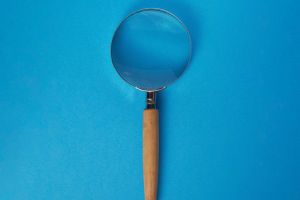A magnifying glass is a common optical tool, usually consisting of a convex lens and a handle, designed to magnify objects and make their details more visible.
Although the design of a magnifying glass is relatively simple, its functions are diverse and are widely used in various fields, including scientific research, education, industry, and daily life.
First of all, the most basic function of a magnifying glass is to enlarge the image of an object. It refracts light to clarify the details of the object, thereby helping users observe small items or subtle features more effectively.
This magnification ability is particularly crucial in scientific research, especially in fields such as biology and geology, where researchers often need to examine tiny cell structures, mineral crystals, or intricate details of insects.
In these instances, magnifying glasses can not only assist researchers in obtaining important data and information, but they can also enhance their observation efficiency.
In the field of education, magnifying glasses play an important role as well. When teachers explain course content, they often use magnifying glasses to help students observe details that may be difficult to see under a microscope.
For example, in biology classes, students can utilize magnifying glasses to examine plant cells, the fine lines on leaves, or the structures of insects. This direct observation experience can boost students' interest in learning and deepen their understanding of scientific concepts.
Additionally, magnifying glasses are frequently employed in science experiments for younger students, helping them grasp the principles of light refraction and how microscopes function.
Beyond education and scientific research, magnifying glasses are also widely used in industry and manufacturing. During product inspections and quality control, magnifying glasses help technicians meticulously examine surface flaws, fine scratches, or other product defects.
For instance, in the electronics industry, engineers use magnifying glasses to inspect solder joints on circuit boards to ensure that there are no short circuits or cold solder joints.
In the jewelry industry, magnifying glasses are employed to assess the cut, color, and inclusions of gemstones, aiding merchants in evaluating the quality and value of jewelry. Attention to detail in these industries is crucial for ensuring product quality, and magnifying glasses are essential tools for achieving this goal.
In daily life, the role of magnifying glasses cannot be overlooked. Many people find it challenging to read small print, and in such cases, magnifying glasses can provide a simple and effective solution.
Whether reading drug instructions, or maps, or admiring the details of stamps and coins, magnifying glasses can help individuals see small text or patterns more clearly.
Moreover, many enthusiasts, such as stamp and coin collectors, frequently use magnifying glasses to observe and authenticate the value of their collections.
The application of magnifying glasses in the field of art and restoration is also significant. Artists and restorers utilize magnifying glasses to observe and restore the details of artworks.
During the restoration of antiques, magnifying glasses can aid professionals in identifying the types of materials, painting techniques, and possible damage, enabling them to develop appropriate restoration plans. This meticulous observational capability is vital for the preservation of cultural heritage and artistic works.
As an optical tool, the magnifying glass is important in science, education, industry, art, and other fields due to its simple yet effective magnification function.
It not only aids in observing details and acquiring information but also enhances our understanding and appreciation of the world around us. Whether functioning as a professional tool or as an auxiliary device in daily life, the magnifying glass is an indispensable instrument that adds convenience and enjoyment to our observation and exploration.


